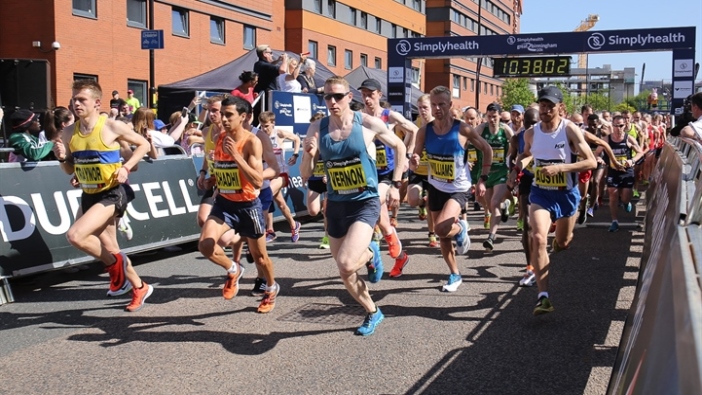
Are you preparing for your first-ever half marathon? Many runners set a significant goal of finishing the Birmingham half marathon since it is a good intermediate distance between the full marathon and shorter races. If this is your first half marathon, it may seem like a daunting goal, but with this novice’s training advice, you’ll be on the starting line in no time.
Ultimately, it’s necessary to give your training some order; you’ll likely want to learn more about sports nutrition and fueling, and the upcoming weeks may involve some of the longest runs you’ve ever done. Thankfully, we can put such worries to rest. We’ll show you how to train more intelligently rather than tougher with the help of the following half marathon training suggestions.
- Run with a Purpose
Even if you have completed a few long races, training for one can be a difficult endeavour. Whatever your level of experience or inexperience, ask yourself this one question: “Why am I doing this?” The response to that question provides your chosen activity with an objective, and it will be your main source of inspiration both during your training period and on race day.
Each of us has a different motivation for putting on our running shoes, whether it’s to discover something new, lose a little weight, run in honour of a loved one, raise money for a good cause, or achieve a personal best. The list goes on and on. Whatever your motivations for running, keep them in mind often and do not lose sight of what it takes for you to cross the finish line.
- Find Shoes That Fit You Properly
How do you choose the best half marathon shoe for you when there are so many variations available? The shoe that makes you feel the most comfortable while running is the finest running shoe for you, according to any running specialist. It really is that easy.
By allowing each pair of shoes enough time to heal between exercises, having two brand-new pairs on hand when you begin your training helps to lengthen the life of each pair. Your kicks require recovery after a tough workout or a long run, just like your body does.
- Train for a Minimum of 13 Weeks
While allocating one week of training for each mile of the marathon may seem a bit unusual, 13 weeks is a sufficient amount of time to gradually increase your marathon pace, weekly mileage, and crucial workouts without becoming stale or losing interest. Novices whose longest run initially may only be four or five miles will be able to comfortably complete the race distance by simply adding a mile to their weekly run.
A 13-week preparation block packed with challenging race-specific exercises and gradually boosting mileage can set you up well to pursue a new personal record if you are a seasoned runner and completing the distance is not an issue. You can cut your training period for your next Birmingham half marathon to around ten weeks after you’re in good running shape.
- Find a Half Marathon Workout Companion
Training with a companion is preferable to exercising alone. A training partner can help you stay inspired and hold yourself responsible when the distance is increased, the workouts get more challenging, or your motivation wanes. They’ll also be there to celebrate with you on race day, spend the day with you, and share beautiful memories with you later.
It could be quite alluring to skip a brisk morning run if you’re running on your own, but knowing that you’ll be meeting someone else to put in the work with you can be the inspiration that keeps you up and out the door. Choose a training companion that is faster than you and allow them to push you to get faster if you want to enhance your time.
- Run on a Variety of Surfaces
Do not get stuck in a rut when running. It can be easy to leave your home and run the same route every day to the convenience of the gym equipment. As much as you can, vary the surfaces you run on. For restorative runs, softer surfaces like trails or grass might be ideal because they have a smaller effect on your body.
Your lower legs or feet may become stronger as a result of the surface’s unevenness. While jogging on the road might help you establish your race pace and tighten your legs, running on a treadmill allows you to manage your pace precisely. Modifying where you run might lessen the most common overuse issues related to running, much as adjusting and replacing your running shoes.
- Practise at a Race Speed
A lot of runners, even veteran ones, will run at a pace that is either significantly slower or significantly faster than the pace they expect to maintain for the 13 miles of the race and then wonder why they weren’t able to do so. Practise makes perfect in life, as in everything else.